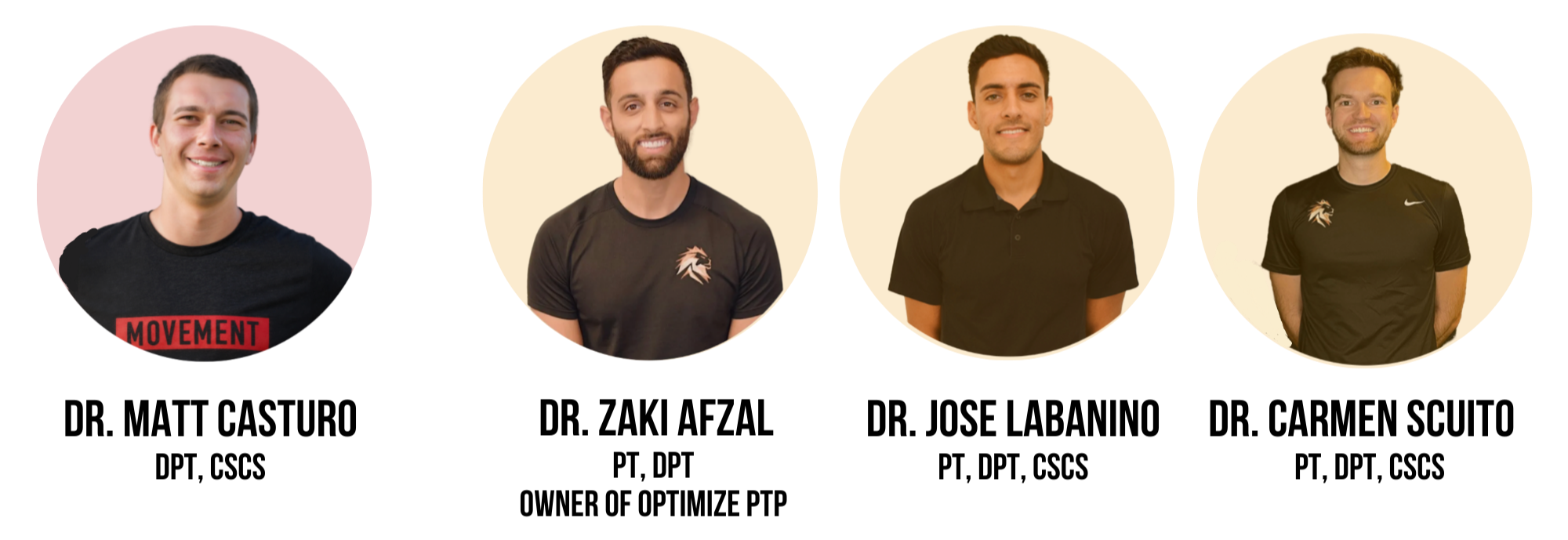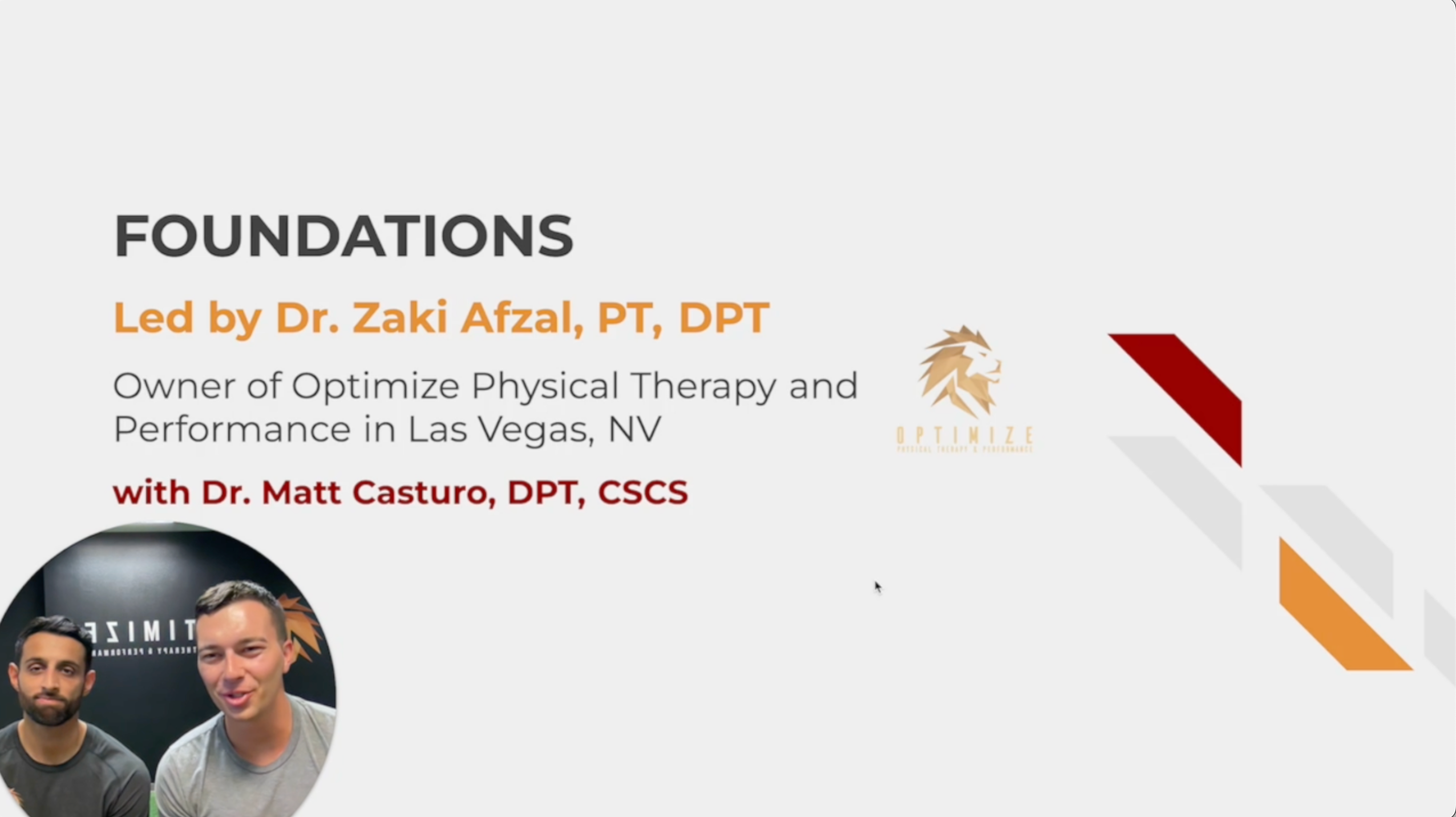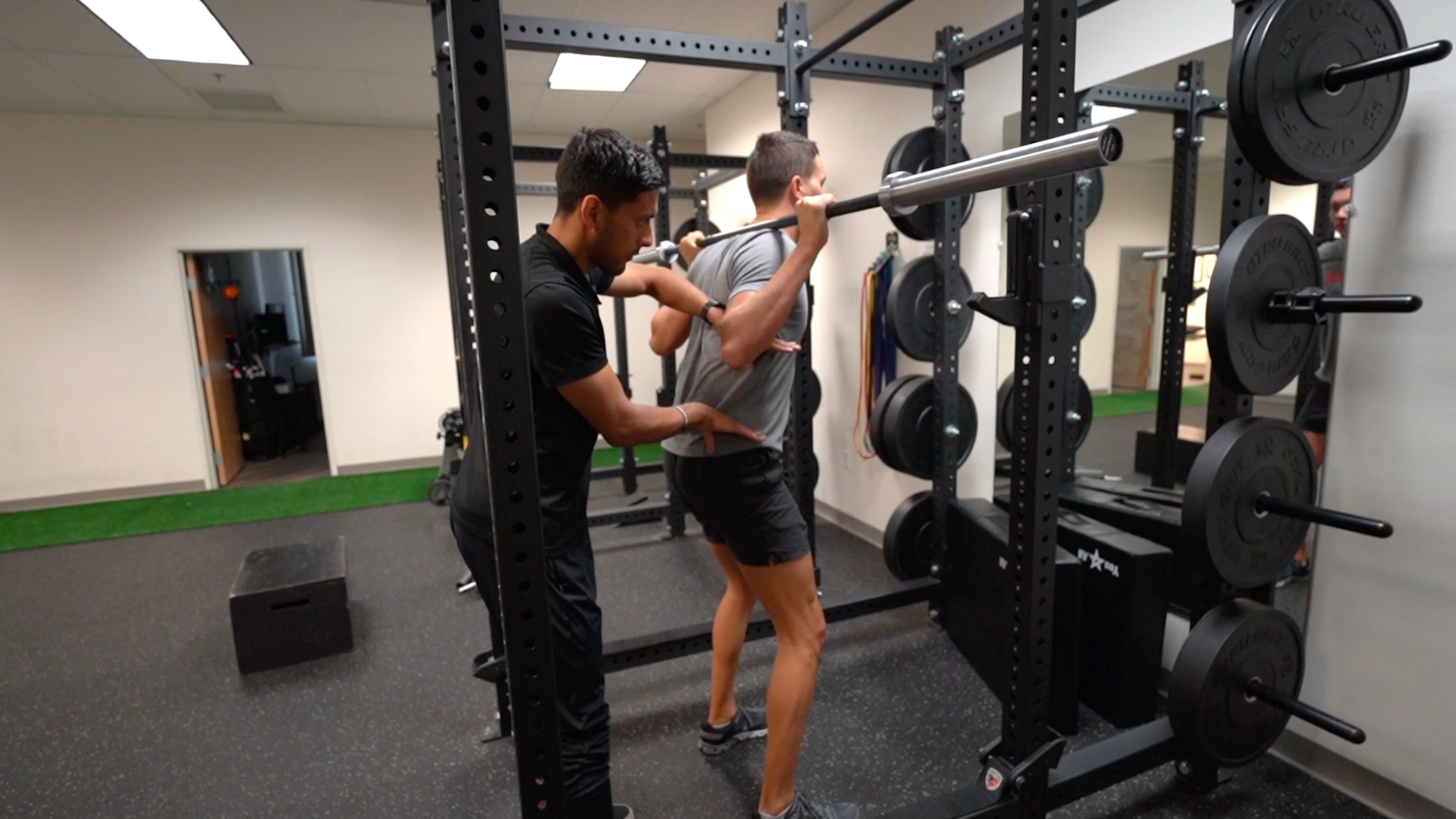

Plyometrics 101 gives you the tools to _____ from day one.
Transform how you train, help your clients move better, and watch your business grow.
SIGN UP NOW
Built in Collaboration with Smart People Who Jump High

We're teaching you the EXACT methods that we use to optimize movement for professional athletes from the NFL, NBA, WNBA, PGA, and more.
Use this fast track mentorship to learn from years of expert experience.

Movement Assessment
Follow a step-by-step system for assessing and improving movement.

Biomechanics
Confidently manage common movement dysfunctions and pain points in your clients.

Earn NSCA CEUs
Earn 1.0 Category C NSCA CEUs upon completion of the course final assessment (unlimited attempts are allowed).

Here's How Plyometrics 101 Works:
As soon as you sign-up, you will have full lifetime access to the course material.
You can complete the __ hours of content at your own pace.
Upon completion of the course final assessment, you will receive your NSCA CEU certificate for ___ CEUs.
Your Step by Step System for Assigning Plyometrics
You may already be familiar with some of the exercises and techniques covered in this course.
But do you have a full system to seamlessly assess your client's movement?
At the end of the course, you'll have a simple, easy to use system for assessing movement at each joint.
Based on the limitations you find, you'll know exactly what exercises to choose to get your clients the best results.


Hey, it's Dr. Matt Casturo
Like you, I'm passionate about MOVEMENT and helping people live their best lives through health and fitness.
After earning my Exercise Science and Doctorate of Physical Therapy degrees, I decided that I was going to share everything I know with YOU.
The primary goal of The Movement System is to share the Science of Human Movement with YOU to help you become a better coach.
We created Movement Assessment 101 to take you behind the scenes.
We want to show you exactly how to assess your athlete's movement and problem solve so that you can get them moving, feeling, and performing at their best.

Course Overview
Each course module includes a lecture followed by an applied breakout session.

Proposed Outline:
- Foundations of Plyometrics
- Brief history of Plyometrics
- Defining Plyometrics
- Jump, Hop, Bound, etc.
- Benefits and misconceptions about plyometrics
- Physiology
- Muscle vs. Tendons
- Bone mineral density
- Stretch shortening cycle
- Fast vs. Slow SSC
- Elastic vs. Muscular
- Ground contact time
- Tissue tolerance/ load tolerance/ workload management (Sports Science of Injury)
- Fatigue management strategies in plyometric programming
- Neurological Adaptations
- Fatigue
- Pre-activation
- Energy Systems
- Biomechanics
- Intro to coaching plyometric technique
- Joint excursion vs. Stiffness
- RSI
- Force Application
- Anatomy
- Motor Learning
- Environment
- Skill development
Application
- Plyometric Readiness Matrix
- Recent plyo experience (low, moderate, high)
- Age (less than 20, 20-30, 30+)
- Seasonality
- Biomechanical Strategy
- Plyometric Testing
- No equipment methods
- Equipment for plyometrics
- Progressions and Regression Framework
- Principles/ Spectrums
- Short vs. Long CGT
- Assisted to Resisted
- Speed vs. Strength
- Bilateral vs. Unilateral
- Intensive vs. Extensive
- Motor Skill Complexity
- Principles/ Spectrums
- Coaching Plyometrics
- The 8 areas of compensation
- Problem solving/ Progressions and Regressions
- Plyometric exercises to avoid
- Power and Ballistic Training
- Preparatory movements for plyometrics
- Post Activation Potentiation and Contrast Training
- Olympic Lifts
- Throws
- 80 Plyometric Exercise Library
- Plyometric Volume Recommendations
- Programming Plyometrics for Beginners
- Programming Plyometrics for Intermediate Athletes
- Programming Plyometrics for Advanced Athletes
- Sport Specific Plyometric Considerations
- Periodization/ seasonality (programming)
- Injury prevention and recovery
- Youth Athlete
- Masters
- Training Teams or Groups of Athletes
- Science / Training Principles
- Force Velocity Curve
- Rate of Force Development
- Ground Contact Time
- Exercise Selection
- Isometrics
- Unilateral vs. Bilateral
- Stiffness
- Strength
- Reactive Strength
- Velocity based training
- Equpiment?
- Plyometrics for Rehab
FOUNDATIONS
- Movement Assessment: The Key to Unlocking Better Movement
- Essential Anatomy: Relationship Between Structure and Function
- Biomechanics: The Gateway to Improving Positions, Posture, and Restoring Movement Options
- Understanding the Difference Between Medical Diagnosis and Movement Diagnosis
- Capacity Building: Optimizing Tendon Resiliency with Proper Loading Thresholds and Protocols

HIP / PELVIS
- Compression Expansion Model of Hip Biomechanics
- Objective, Reliable Testing of Hip Movement
- Neurological Quick Hitter Hip Mobility Soft Tissue Strategies
- Deep Hip Strengthening Strategies that Help Mobility Last
- Positional Coaching and Cueing for Optimal Results

SPINE / TRUNK
- Debunking Outdated Core Training Strategies
- Red Flags and Signs Indicating a Need for Referral
- Postural Presentation Breakdown and Related Biomechanics Considerations
- Breathing Mechanics and Infrasternal Angle Analysis
- Applied Spine Pain Science
- 3 Step Sciatic Nerve Solution

SHOULDER / UPPER EXTREMITY
- Functional Anatomy of the Shoulder
- Biomechanical Approach to Improving Scapular Movement
- Shoulder Flexion Arc Kinematics
- Differentiating Anterior vs. Posterior Capsule Strategies

KNEE / ANKLE / FOOT
- Ankle Mobility Assessment
- Quick Hitter Dorsiflexion Improvement Strategies
- Global Torsion Testing for Lower Extremity Function
- Patellar Tendon Progressive Loading Protocol
- Achilles Tendon Progressive Loading Protocol

GAIT
- The Truth About Pronation
- Dynamic Single Leg Balance Strategies
- Correcting Stance Phase Dysfunction
- Essential Gait Analysis
- The #1 Go-to Shin Splint Fix

CASE EXAMPLE
- Exactly How to Run the Full Movement Assessment Start to Finish with Confidence.

What's Included:
12-Week Progressive Plyometric Training Programs
- Beginner
- Intermediate
- Advanced
80 Exercise Plyometric Library
Plyometrics Readiness Matrix
What You'll Learn:
- A new, innovative approach to understanding human movement and performance
- How to confidently address common sources of pain
- How to select corrective exercises that actually create lasting change
- Tendon loading protocols that get results

You're in the right place.
Movement Assessment 101 is for coaches like you who want to invest in their knowledge and build the skills to best serve their clients and athletes.
If you're a Personal Trainer, Strength & Conditioning Coach, or Rehab Professional, Movement Assessment 101 will give you the tools to improve client results and grow your business.
One Payment
3 Monthly Payments
90-Day 100% Money Back Guarantee
I am confident that you will find this course to be tremendously valuable. If for any reason you are not 100% satisfied, just send me a message and I will provide a full refund, no questions asked.

Frequently Asked Questions
How long does the course take?
Will This Give Me Wings?
What if I have a question?
Do I get CEUs?
How long will I have access?
Are You Ready?
Have a question or comment?
Contact [email protected]

